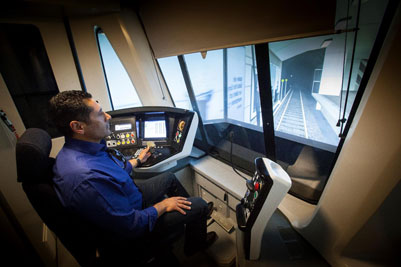MTR launches cutting edge train simulator training centre
Posted: 8 September 2014 | | No comments yet
MTR Corporation, which operates the London Overground and the Stockholm Metro, has unveiled their newest state-of-the-art driver training facility in Sweden…


MTR Corporation, which operates the London Overground and the Stockholm Metro, has unveiled their newest state-of-the-art driver training facility in Sweden.


The new facility is part of MTR’s on-going programme to deliver consistently world-class performance on the Stockholm Metro, which has already seen on-time performance rise to over 95%. In London, where punctuality on the Overground has risen to over 96%, improvements have also seen customer satisfaction rise to over 90%.
MTR intends to apply the learnings and best practice from both Stockholm and London to future services including the MTR Express open-access intercity service between Gothenburg and Stockholm, and on Crossrail, where MTR was recently appointed as operator by Transport for London. MTR is also bidder for the ScotRail franchise.
It took over 18 months to develop the new simulators. All 110 kilometers of track, 100 stations and four train depots in the Stockholm metro system were filmed to create highly detailed, exceptionally realistic simulations.
The life like accuracy and huge range of potential scenarios, mean that as well as training new drivers the simulators can be used to train existing drivers in how to best handle challenging scenarios, which would be very difficult to train for in passenger service.
Scenarios including:
- A passenger pulling an emergency alarm
- A passenger holding open a train door
- A signal failure
- A fault with the train
- Driving in adverse weather conditions
Jeremy Long, CEO – European Business said:
“MTR’s is committed to delivering world-class service for passengers. We are constantly innovating and looking for ways to improve standards and enhance customer experience.
“The new simulators precisely replicate how a train behaves. They will allow us to simulate scenarios we could not easily create on actual track. They will improve new driver training and enable existing drivers to be better trained to deal with infrequent but challenging scenarios.”


